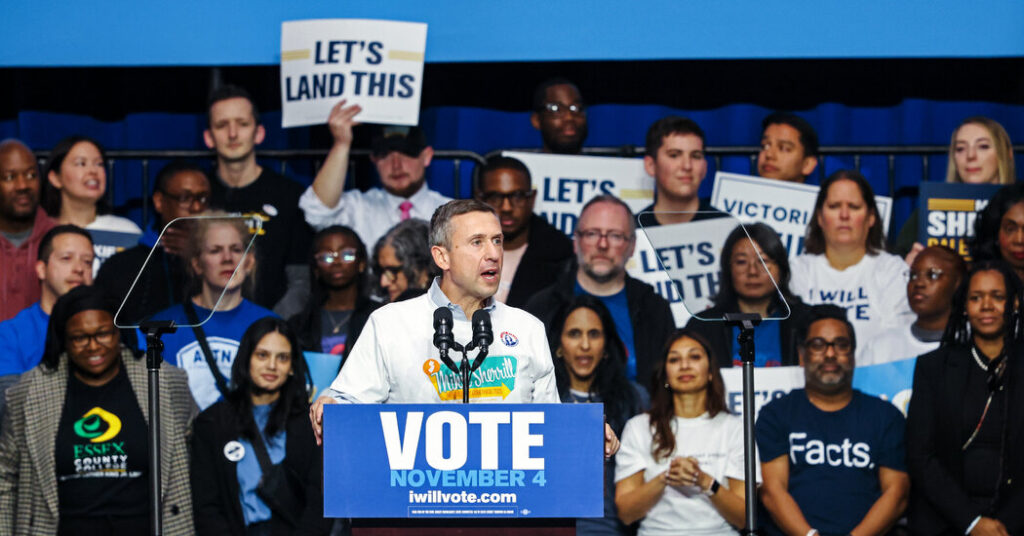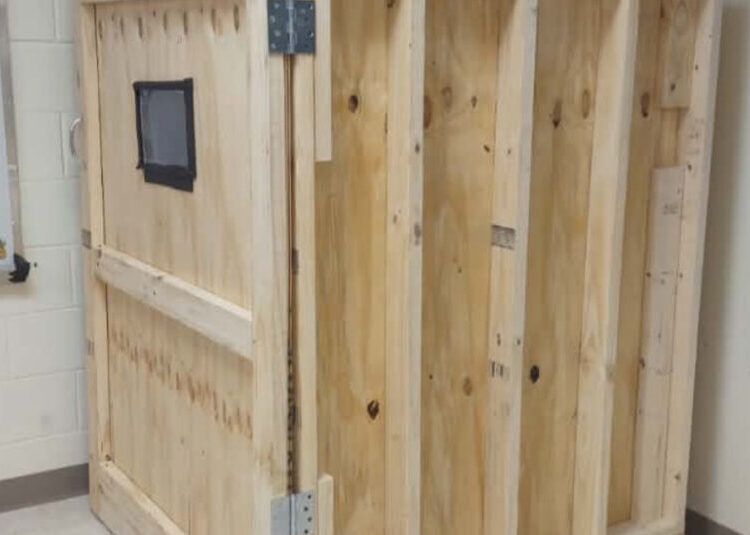The Democratic National Committee took out a $15 million loan last month to replenish its shrunken coffers before elections in Virginia and New Jersey and to keep operations fully funded entering 2026, according to party officials and documents reviewed by The New York Times.
Tapping a line of credit outside the crucible of a midterm or presidential election year is unusual for a major party committee, and it is the latest sign of financial distress for the official arm of the Democratic Party.
The D.N.C. entered November with $18.3 million on hand — $15 million of which came from the loan.
By contrast, the Republican National Committee had entered October with $86 million in the bank and no debts.
New filings are due Thursday with the Federal Election Commission. A summary of the D.N.C.’s monthly financial statement was reviewed in advance by The Times.
The D.N.C. moved quickly to use the borrowed money, sending $3.2 million each to the New Jersey and Virginia governor’s races in recent months, as well as giving $175,000 to the Pennsylvania Democratic Party to mobilize voters before elections for the state’s Supreme Court. Democrats swept all those contests, and others across the nation.
Ken Martin, the chairman of the D.N.C., said in a statement to The Times that the decision to take out loans in his first year leading the party arm had been strategic.
“We can’t win elections or fight back against Trump if the D.N.C. downsizes operations like it often does after a presidential cycle,” Mr. Martin said. “I made a bet that investing early would build power, rack up wins and rally supporters back to the table. That bet is paying off.”
Mr. Martin, a former state party chairman in Minnesota, has a deep-seated belief in the importance of spending early on organizing. The party said that Democratic-coordinated campaigns this year in New Jersey, Virginia, Pennsylvania and California had trained 17,000 volunteers, knocked on 2.5 million doors and made 8.5 million phone calls.
The national party itself has approximately 250 people on staff this fall, federal records show, growing after post-election layoffs in 2024 had reduced the footprint to closer to 200.
One of Mr. Martin’s major initiatives has been to increase the amount of money that the national party distributes to state parties, swelling the sum by 50 percent in red states and 30 percent in blue states.
Those monthly outlays now amount to more than $1 million per month. The national party has averaged raising a little more than $7 million per month recently, meaning the state party contributions amount to about 15 percent of monthly revenues.
Mr. Martin has spent this money at a time when relations remain tense between the D.N.C. and many of its longtime major donors. The donors remain angry that former Vice President Kamala Harris’s campaign and the party spent $1.5 billion in 15 weeks en route to sweeping losses in 2024. All of that spending came under previous D.N.C. leadership, but Mr. Martin irked some of those donors anew when his campaign for the top party post early this year was critical of the influence of major donors.
“If they want to talk to me, they can come talk to me,” Mr. Martin said in February, referring to party donors who supported his rivals in the chair race.
The party that does not hold the White House often struggles to compete financially, and the D.N.C. has faced lean times before. In November 2017, nearly one year into Mr. Trump’s first term, the party had $4.9 million on hand — and $3.2 million in debt.
Roger Lau, the party’s executive director, said taking out such a loan was “common practice” at parties’ committees. He said it was necessary to make “aggressive investments in infrastructure, state parties, and campaigns.”
While it is true that party committees often take out loans and lines of credit, it is relatively rare for the D.N.C. to do so at this early point in an election cycle. The last new line of credit that the party took out came in early 2019 — the year before a presidential election, rather than three years out. The previous loans came late in major election years: September and November 2010, August 2012, October 2014 and October 2018.
The party has raised more than $81 million through the first 10 months of this year in direct donations, but a significant share has gone to paying off leftover bills from the Harris campaign. The payments in 2025 for 2024 bills totaled $18.4 million through September.
Ms. Harris has raised all the money to cover those costs, mostly through small-dollar fund-raising. The handshake agreement between her campaign and the party, which The Times detailed in August, has made it trickier to track the exact state of the party’s finances because it has simultaneously increased the overall fund-raising haul while not changing the committee’s bottom line.
Party officials said the books were closed on all outstanding Harris bills as of September.
The party is now in the process of coming to an agreement with the Harris operation to permanently acquire its large and lucrative list of email addresses for approximately $7 million, according to two people briefed on the transaction who spoke on the condition of anonymity because the deal is not yet final. As such, it will not be reflected on Thursday’s F.E.C. report.
Shane Goldmacher is a Times national political correspondent.
The post Short on Cash, D.N.C. Took Out $15 Million Loan in October appeared first on New York Times.




